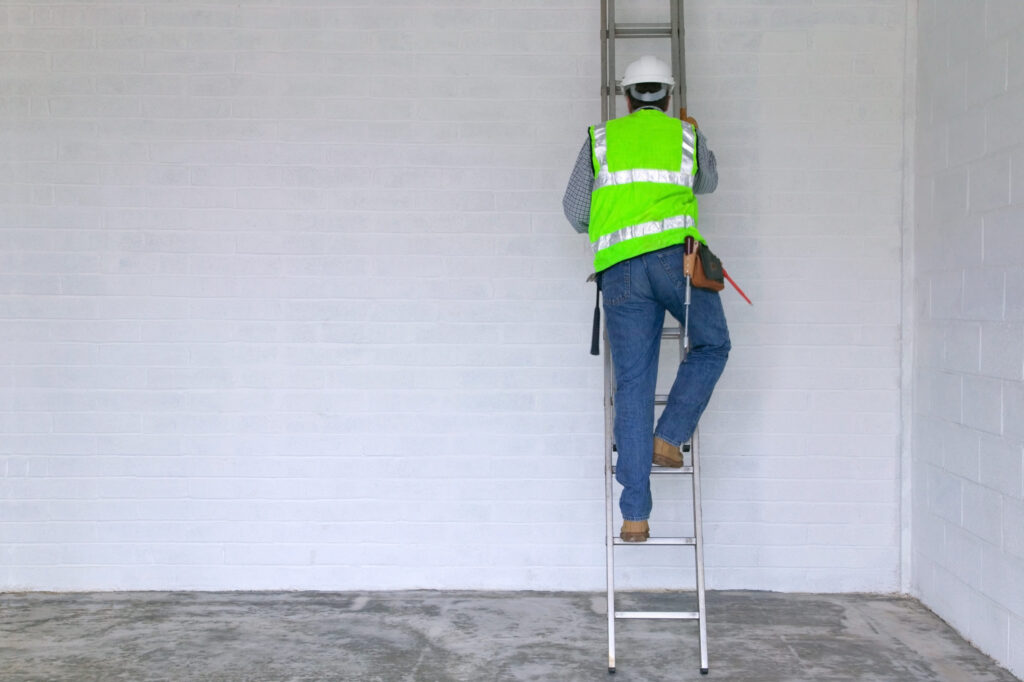Ladder Safety Strategies Every New Mexico Contractor Needs to Follow

Surely, what goes up must also fall down? Ideally safely, particularly while operating from a ladder. Did you know that 50% of falls that need medical care occur from a height of 10 feet or less, and that ladders placed number three on OSHA’s list of the top 10 infractions for 2022? You need to be very careful while using ladders for these reasons.
There are several types of ladders, including step, straight, telescopic, articulating, A-frame, extension, and orchard ladders. These ladders may be built of fibreglass, aluminium, or wood, and they serve a variety of functions. Thus, what safety precautions can you take while using ladders? Here are five ladder safety precautions that everyone should follow.
Techniques 1: Select the appropriate ladder.
- Perform an examination of the worksite’s employment hazards.
- Is a ladder the ideal work tool?
- Is there another option I could utilise, such a platform, scaffold, or lift?
Do I have any materials with me? If so, consider the duty rating, which shows the most weight that the ladder can securely support. Add the following to get the total weight your ladder can support:
Your bodyweight plus
- The weight of your personal protective equipment (PPE), clothes, and other items
- The weight of the materials and tools you are carrying, in addition.
- The mass of the equipment and supplies that are kept on the ladder.
Make sure the ladder you choose can support the weight that will be on it by checking its load capability. Based on weight, ladder duty rating is divided into five categories:
- Type IAA – Extra heavy duty ladders – Can accommodate 375 lbs.
- Type IA – Extra heavy duty ladders – Can accommodate 300 lbs.
- Type I – Heavy duty – Can accommodate 250 lbs.
- Type II – Medium duty – Can accommodate 225 lbs.
- Type III – Light duty – Can accommodate 200 lbs.
Technique 2: Consider the surrounding environment
- Avoid using ladders during strong winds or storms.
- Consider if you are working on uneven surfaces
- Consider if you are working near powerlines or under them? Avoid using metal ladders while working close to power lines since they carry electricity. Use a fibreglass or wood non-conductive ladder in its place. Assume that every overhead wire is hazardous and energised at all times.
Technique 3: Take good care of your ladder.
Before starting each work shift and as often as needed, examine ladders.
Examine the locks, labels, rails, and rungs. The ladder has to be taken out of operation and labelled, maybe with “Dangerous – Do Not Use,” and it needs to be replaced if anything is cracked, broken, or missing.
Any ladder that has been determined to be dangerous has to be demolished in a way that makes it unusable. The ladder must not be made available for use by another individual.
Technique 4: When utilising the ladder, adhere to recommended safety procedures.
Doors that are closed but may open towards the ladder shouldn’t have the ladder in front of them. The door has to be guarded, secured, or obstructed. Lock up the rungs. Verify again that it is extended three feet over the higher landing and that it is stable. To increase stability, ladders may also need to be attached to a gutter guard or fascia.
Arrange the ladder at the appropriate slant. When figuring this up, take the 4:1 rule into account. Lay the ladder’s feet out one foot horizontally for every four feet that separate the ground from the higher point where it is resting. The ladder’s bottom should be 4 feet out from the ledge, for instance, if it is sitting on a roof edge 16 feet above the ground.
Check whether fall protection is necessary. Above 24 feet, fall protection is necessary for permanent ladders.
When going up or down, always face the ladder and make use of three points of contact. Put another way, be sure that both hands and one foot, or both feet and one hand, are in touch with the side rails, rungs, and/or steps of the ladder. In this manner, even if one of your limbs slides during the ascent, you won’t likely become unsteady. It’s crucial to remember that nothing in either hand may get in the way of your ability to maintain a strong grasp on the ladder. If you must always have tools on hand, tool belts might be very useful. Moreover, an electric hoist or pulley system may be used to lift tools. It is also advised to wear shoes that are slip-resistant.
Never use the top ramp as a stepping stone or try to move the ladder while standing on it. Three feet above the higher landing is where the ladder should extend. When working, avoid bending over or reaching too far to avoid going off the ladder.
Technique 5: Encourage team members to use ladders safely
Employees should get training on choosing, storing, carrying, and using ladders safely.
Regularly examine ladders and discard those that are no longer safe for use. To prevent workers from being persuaded to attempt to use them even after they have been declared out of service, it is advised to chop them in half.
Keep an eye on coaches and staff to ensure proper use. You’ll be well on your way to working securely and getting home to your loved ones each night if you heed this ladder safety advice. Don’t overlook ladder safety!
